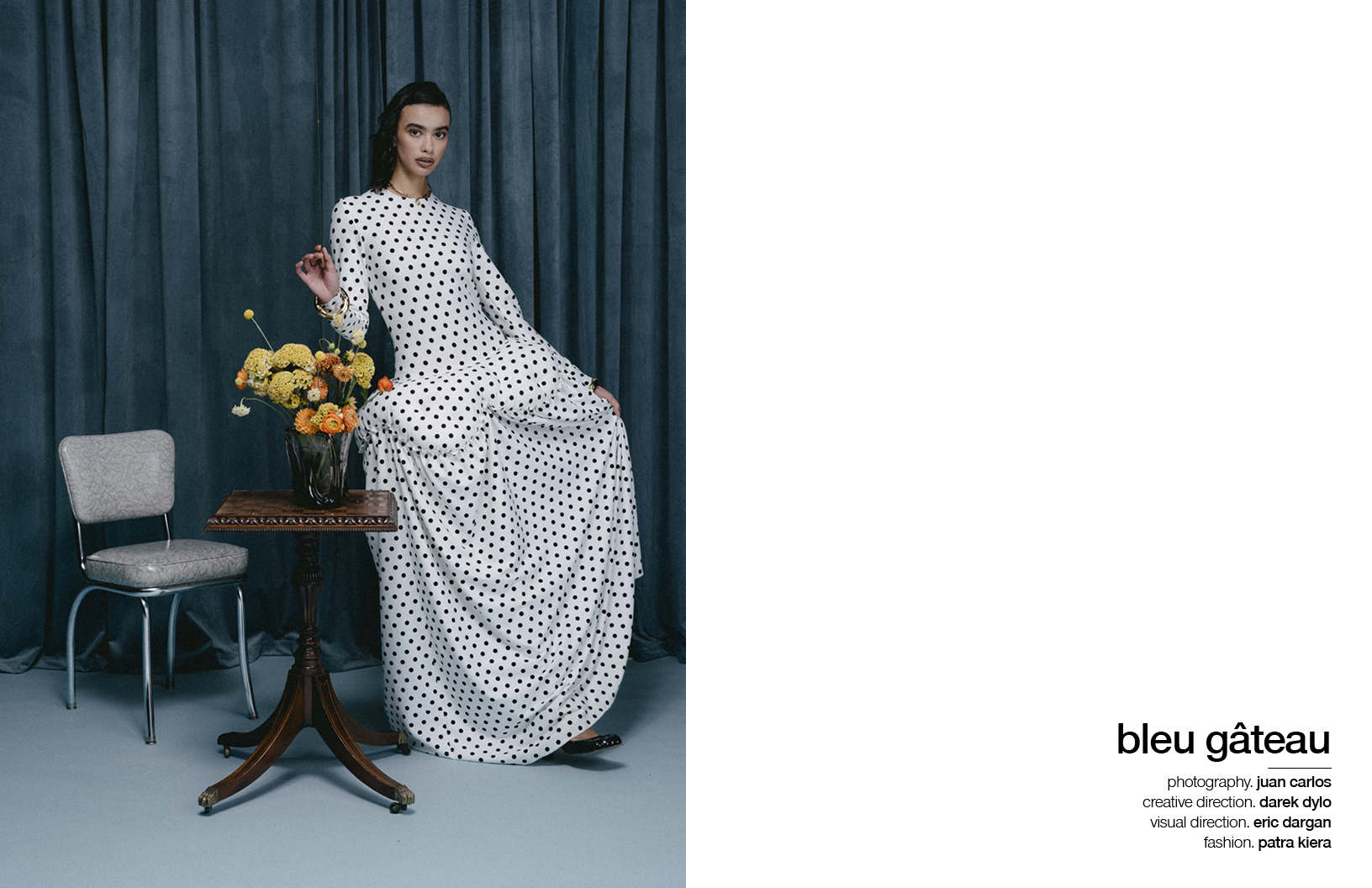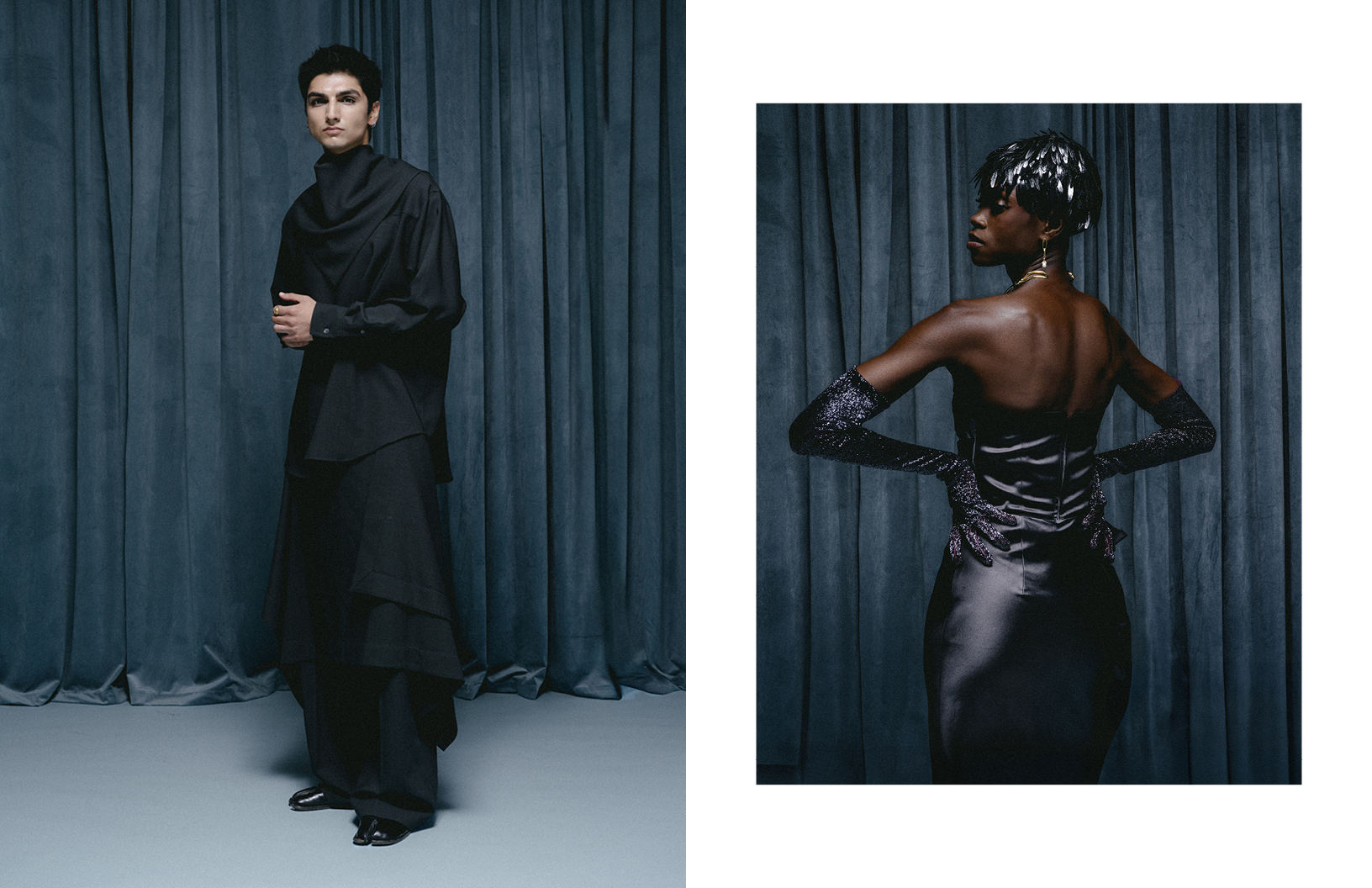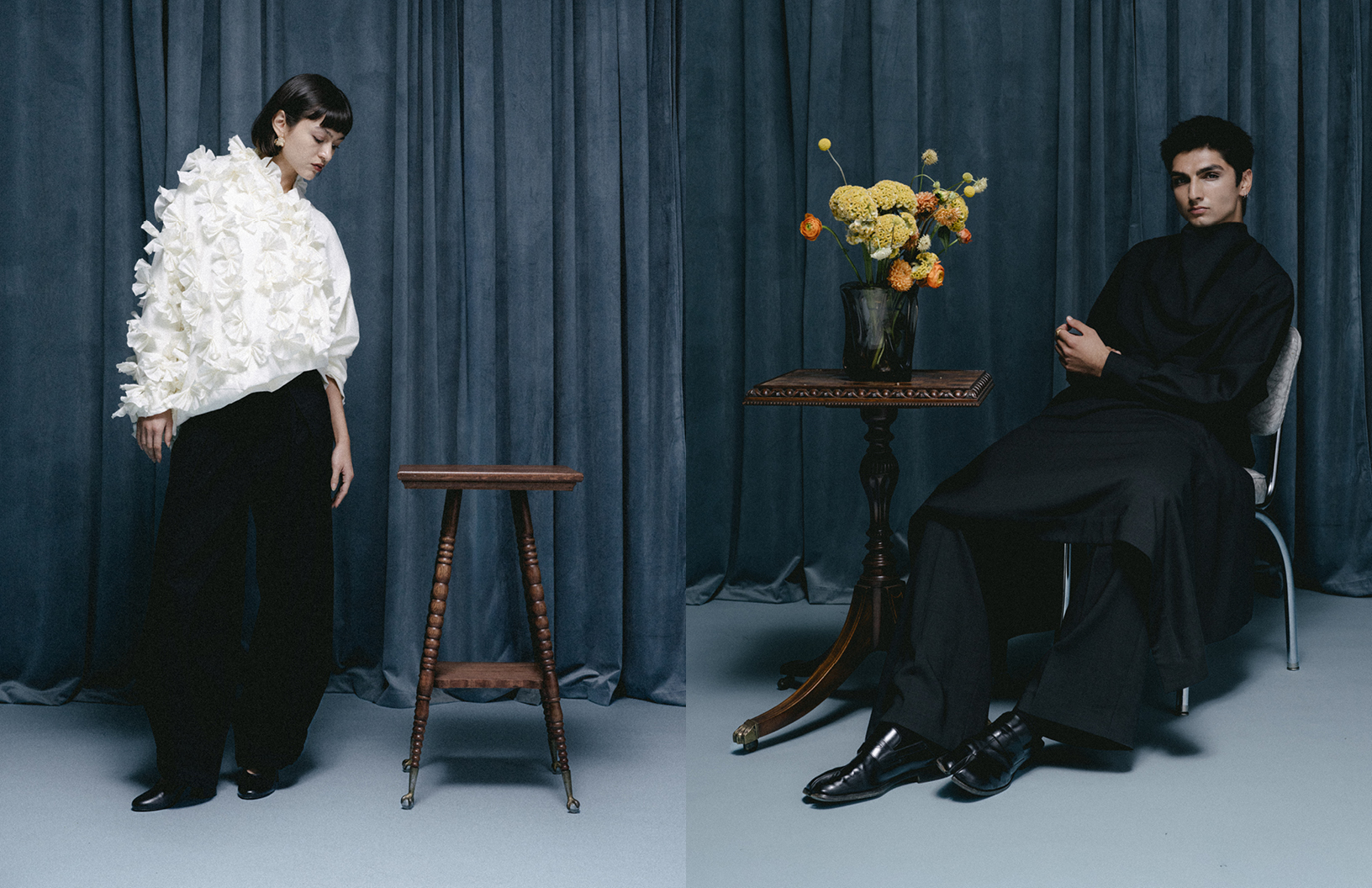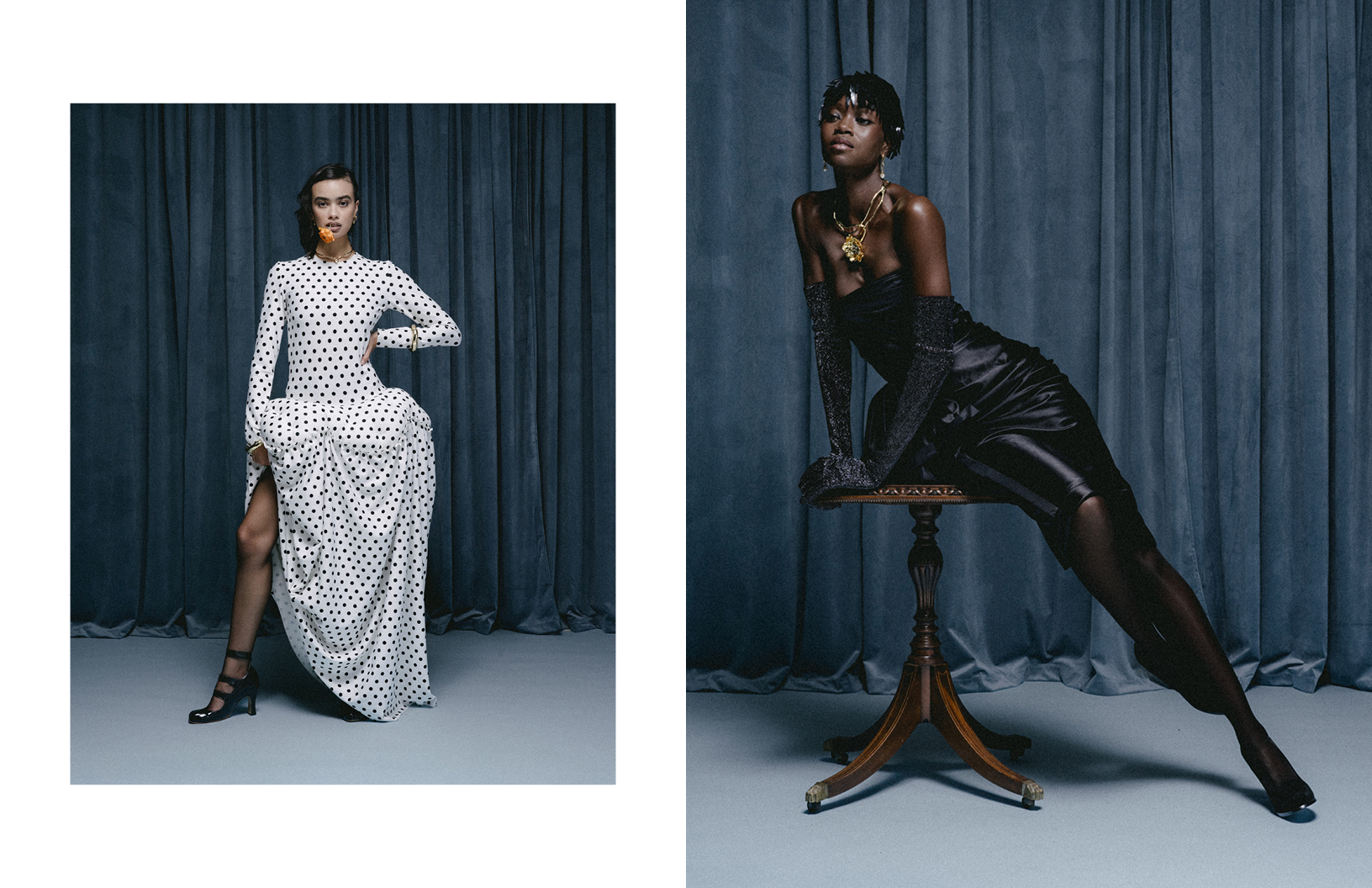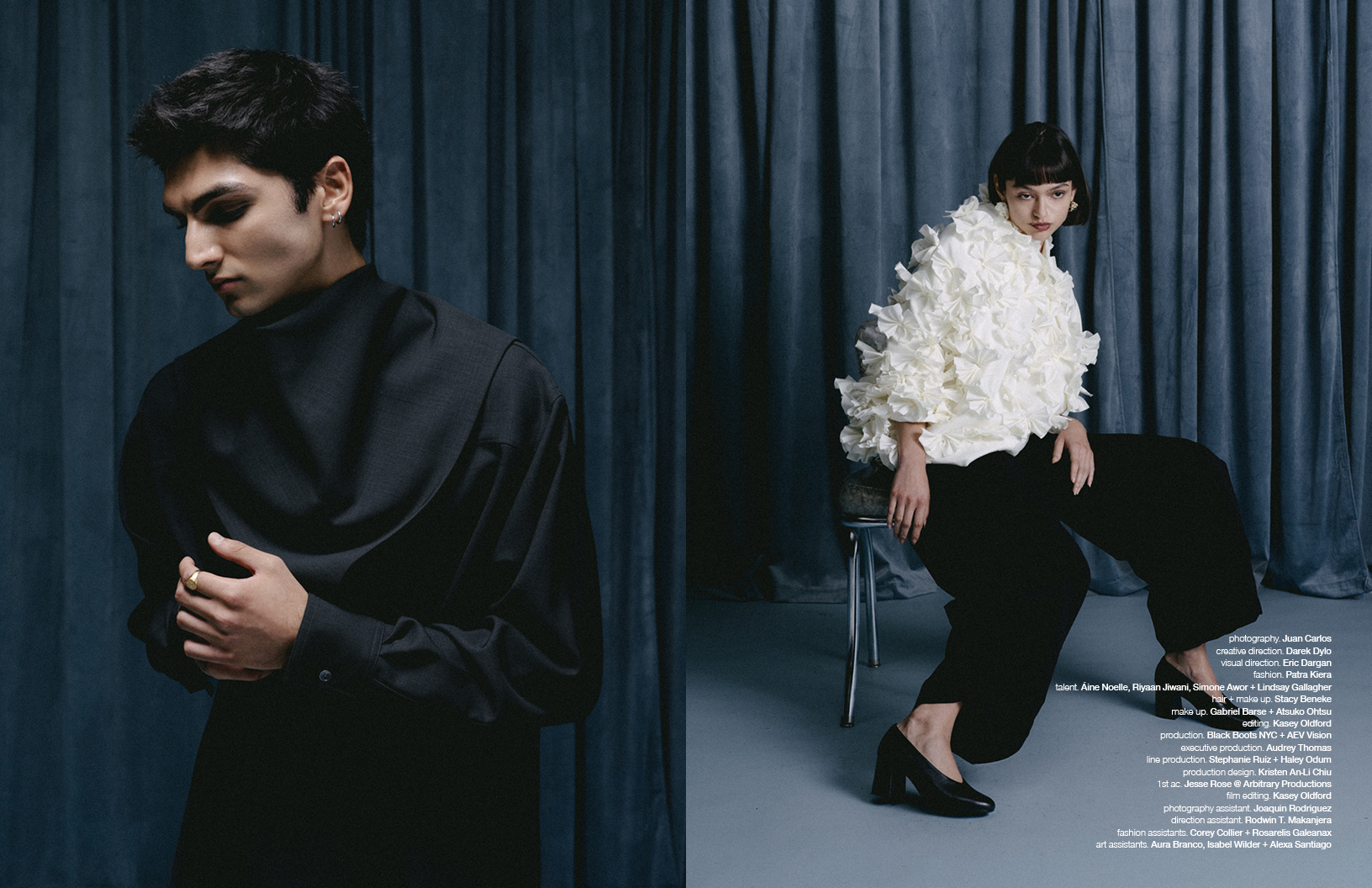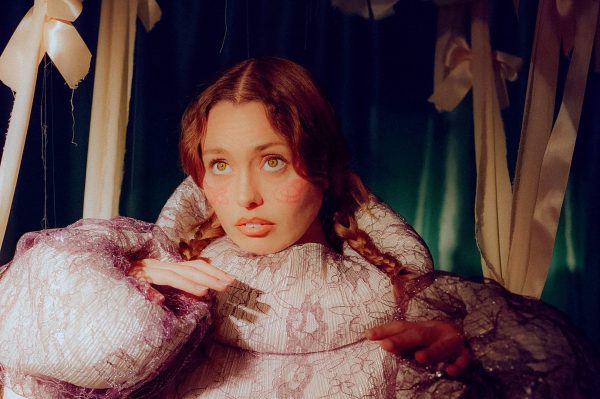In the midst of Tokyo’s busy and colourful streets, a new trend has emerged in the past few years: genderless kei — a forward-looking approach to fashion that rejects the gender binary. It was precisely through a video from i-D Magazine exploring the subcultural movement that South Korean designer Hwa Young Lee became introduced and later infatuated with it. The youthfulness and uniqueness of the depicted clothes heavily inspired the Nottingham Trent University knitwear design graduate for her menswear collection “Boys Be Kawaii” — in which young angelic boys embrace their femininity through colourful, elegant and well-thought pieces.
“Boys Be Kawaii” is a collection successfully inscribed in an evolving society, where boundaries between preconceived gender notions are blurred; where people find the confidence to explore and show themselves in unconventional ways. Here, Schön! exclusively catches up with Lee to discuss what drew her to fashion, her own understanding of kawaii and gender, and what she would like to tell people who are still scared to explore their ever-changing identities.
First of all, what drew you to fashion design and knitwear?
Honestly, there was no dramatic moment when I started studying fashion design. I have loved clothes and fashion since I was a kid. One day, I watched the TV show Project Runway, and it inspired me greatly to become a fashion designer.
Watching the show, I was surprised to see how creative fashion designers are, and what interesting clothes they can make in restricted circumstances. I could feel their passion and it made me eager to become one of them. So, that was the start of my thinking about becoming a fashion designer. After studying fashion design, I wanted to learn something more craft-like and I discovered I could learn textile design at the same time as fashion design, so I chose to do a knitwear course.
When did you start questioning the construction of gender and identity?
In my course, there is a module called “design, context and culture.” In the first year, I found myself questioning the importance of identity in understanding culture and design. Furthermore, this got me thinking about the relationship between the construction of gender and identity. What I felt at first was that people still expect specific images of gender and this expectation impacts on their forming of identity; for example, boys are now wearing cooler fashion than girls. And images like these have an influence on identity formation, especially in fashion. This affects the construction between gender and identity.
This collection, “Boys Be Kawaii,” is all about the experimentation of genderless fashion through colourful pieces. What is your own understanding of masculine kawaii?
So, my own understanding of masculine kawaii is that men can also have soft, sweet and innocent images, meaning they could also adore kawaiiness in themselves. Because kawaii embodies more than meaning ‘cuteness.’ It can be used in emotions, bodily behaviour, fashion, lifestyles, and so on. Therefore, using — what most people would call — bold and feminine colours with soft and warm textures of fabrics, could be good way to show my understanding and convey my meaning to people who see my collection.
You have been greatly inspired by the i-D video on Tokyo’s genderless youth. The idea that one’s world view can be totally changed through their fashion is an important theme in it. How does your collection relate to your understanding of the world and identity?
In the video, young people are trying to break traditional perspectives on gender and so find greater meaning in and a wider understanding of fashion. I read an interview with Yutaro, who is a famous model of genderless kei fashion. He said that since changing his style and starting to wear make-up, ironically, people have started paying him attention and copying him. This makes him feel more confident about himself, and he finds he is more able to enjoy himself.
The example of Yutaro shows that fashion is an important direct means for people to show their identities, and helps to make them more self-confident. Identity and fashion cannot be separated in postmodern life. In particular, identity plays an important role in the development of young men and women of every generation. A teenager insists on having identity and continually searches for it through music preferences, physical looks, sexuality, relationships, etc. My aim is to support this search for identity, to move away from stereotyped images of gender and identity to create something different, youthful, and fun. Ultimately, I hope that through my collection, people might better understand and become more open-minded about diversity in gender and identity.
Mentioning Japan, your look-book is all about colourful patterns, emojis and glittery animations. Do you have a particular relationship with, and sensitivity to, Japanese culture?
Japanese culture is very important for my interests and lifestyle. Because South Korea is close to Japan, geographically, and due to the influence of mass media, these countries influence each other and are accepting of each other’s culture.
I have been able to experience Japanese culture since I was young, and the subtle differences from South Korean culture have increased my interest in it. When I was at school, it was fashionable to watch Japanese dramas and films, and also to follow and purchase Japanese fashions, music, art, and food. I gained a particular interest in Japanese fashion. In Japan, there are many diverse fashion groups and people do not care what others think about them as much as they do in South Korea. I have read lots of Japanese fashion magazines to broaden my view of fashion, and this has helped me to learn more about Japanese fashion trends and subculture. This has helped me develop my ideas and my identity in design.
“Boys Be Kawaii” is your final-year collection at the Nottingham Trent University. How would you say it mixes both the inspiration you got from Japanese culture and the education you’ve received in the United Kingdom?
What I learned from my education in the U.K. was that even when I was studying art and design, I still had to do a lot of research and deep analysis, and doing those things helped me make my own what I had found out through research. As I mentioned before, Japanese culture is part of my background, so I didn’t think about it that deeply. Actually, using all these learning processes helped me to understand the background of Japanese culture and kawaii culture. And so, it was easier to develop the collection and it pointed me in the right direction to do so.
What do you want to say to people who are still scared to explore fashion outside of their gender and social norms?
I’d like to say, don’t be afraid of showing who you are, and what you like, because there is no correct answer. Maybe everybody won’t understand what you’re doing, but there are always people who will understand, and like, what you do and wear. I think that the more people show themselves outside of their gender and social norms, the more people will embrace and understand it.
Now that you have graduated, do you have any upcoming projects you would like to share with our readers?
First, I am looking for a job to develop my skills and give me more experience in industrial fields. And also, I am thinking of collaborating with other creative people. I would like a challenge and to have fun. So, if anyone is interested in working with me, don’t hesitate to contact me!
Make sure to follow Hwa Young Lee on Instagram to keep up with her future ventures.
photography. Lauren Collier
design + styling. Hwa Young Lee
models. Matthew + Hannes
hair + make up. Erin Wheatland
fashion assistant. Inny Kim
interview. Hugo Scheubel


































































